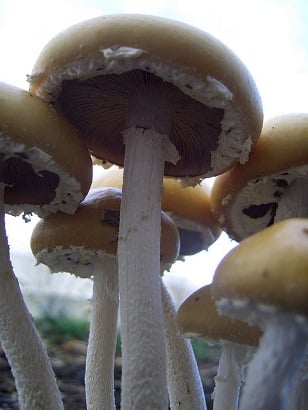 tonx / Flickr)” width=”308″ height=”410″ />Stropharia fungi. (Image: tonx / Flickr)Last week, on May 23, the city of Portland, Ore., found a dangerous form of E. coli bacteria in the regional water supply. More than 670,000 people were warned to boil their tap water before drinking it, and some restaurants were forced to close. A few days later, the warning was lifted.
tonx / Flickr)” width=”308″ height=”410″ />Stropharia fungi. (Image: tonx / Flickr)Last week, on May 23, the city of Portland, Ore., found a dangerous form of E. coli bacteria in the regional water supply. More than 670,000 people were warned to boil their tap water before drinking it, and some restaurants were forced to close. A few days later, the warning was lifted.
It’s not just about cleaner water but also about building greater biodiversity into the places where we live and work.
Infections from this type of bacteria are unpleasant but not usually deadly—in most cases the symptoms are limited to diarrhea, vomiting, and fevers. Yet, of the roughly 265,000 E. coli infections reported each year in the United States, 5 to 10 percent result in a potentially life-threatening complication known as hemolytic uremic syndrome, according to the Centers for Disease Control.
Mycologist Paul Stamets believes that cities like Portland should consider an out-of-the-box solution: running water through filters that contain fungi specially selected for their antibiotic abilities.
“Many of the pathogens that afflict us also afflict fungi,” Stamets says, so over the millennia they have evolved to be adept at killing and consuming bacteria. It’s the same basic principle that makes penicillin—an antibiotic molecule derived from a fungus—so effective.
The technology Stamets developed to harness this ability for use in municipal and rural water systems essentially consists of directing runoff water through wood chips or yard waste on which specific fungi are growing. He calls it “mycofiltration.”
Stamets is founder and owner at Fungi Perfecti, a company that develops and sells all sorts of mushroom-based products—from grow kits to skin products to calendars featuring “beautiful mushrooms of the world.” He has been toying with mycofiltration since the early 80s. After the EPA expressed concern about bacterial pollution stemming from old septic tanks in the neighborhood, Stamets tried running stream water through a mixture of yard waste and mushrooms.
Though that early test showed promising reductions in bacterial concentrations, that was just his backyard. When Stamets thought about developing the idea into a more widespread solution, a lot of questions came up: Would the fungi be able to survive the difficult conditions—including flooding, drought, heat, and cold—that they’d encounter in cities and rural areas around the world? Would water be able to flow around them at a sufficient pace? And just how effective would they be?
In 2012, Fungi Perfecti received an $80,000 grant from the EPA to dig more deeply into these questions. According to a report released last year, Stamets’ team tested 30 different types of mycofilters, which contained different species of fungus growing on various mixes of wood chips, sawdust, and straw. In the end, the best-performing species turned out to be the species from the genus Stropharia, commonly known as the “wine cap mushroom.” The wine caps—which are not only edible but considered a delicacy—consistently removed more than 20 percent of E. coli that flowed around it.
Stamets believes that mycofiltration could be integrated pretty easily with processes that already take place in places like Portland. For example, when branches are trimmed from around power lines, the resulting wood chips could be mixed with fungal spores and then used to line runoff ditches or the beds around trees, so that runoff water gets a bit of natural antibiotic treatment. It’s not unlike the way that cattails and other plants are already used to clean pollutants from water by cities like Arlington, Va., and by the U.S. Air Force.
And while the impact from that process might be small, Stamets is quick to point out that “more engineered designs” are also possible.
For Stamets, it’s not just about cleaner water but also about building greater biodiversity into the way we construct the places where we live and work.
“Biodiversity equals biosecurity,” he says. “As advanced as our computer systems are, our environmental systems are not keeping up with the pollution we create.”
Join us in defending the truth before it’s too late
The future of independent journalism is uncertain, and the consequences of losing it are too grave to ignore. To ensure Truthout remains safe, strong, and free, we need to raise $44,000 in the next 6 days. Every dollar raised goes directly toward the costs of producing news you can trust.
Please give what you can — because by supporting us with a tax-deductible donation, you’re not just preserving a source of news, you’re helping to safeguard what’s left of our democracy.
